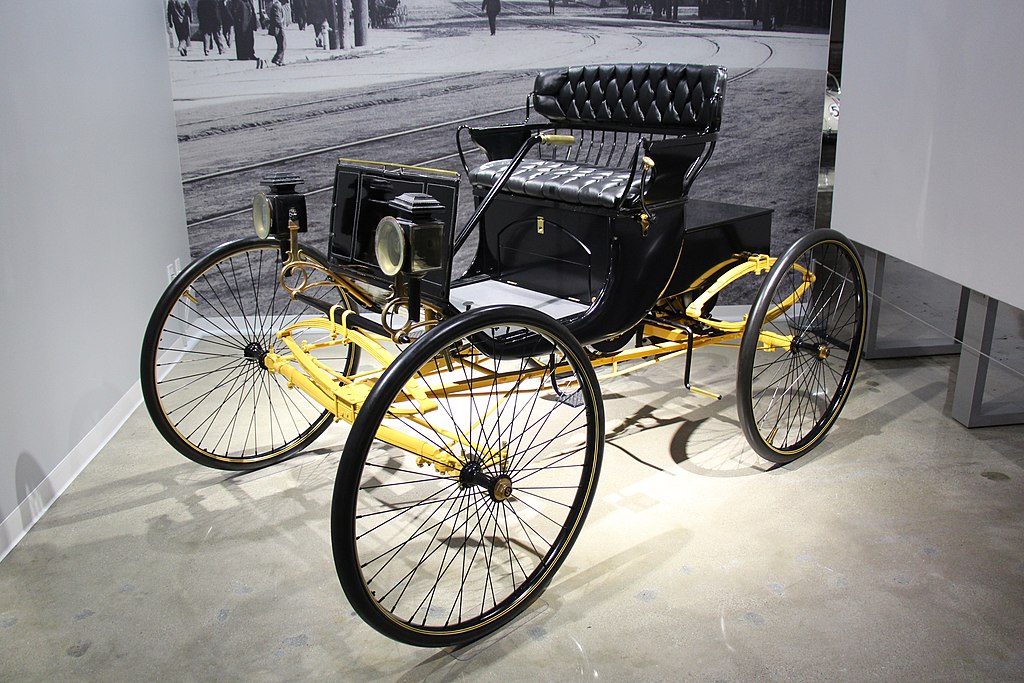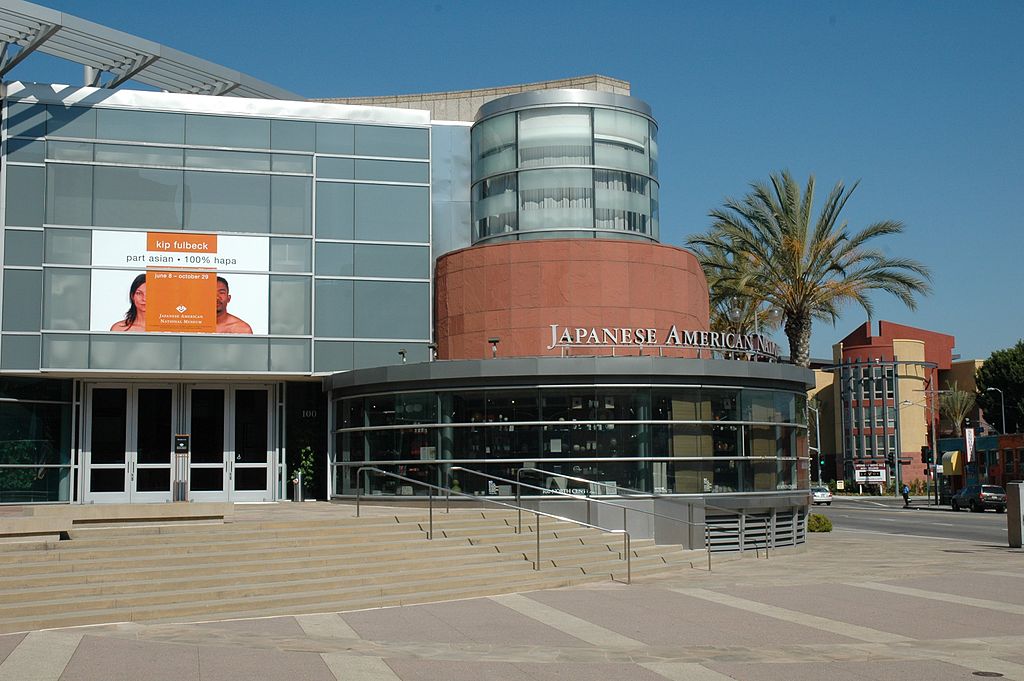
The Brooklyn Museum is an art museum that is New York City’s third-largest in physical size and holds an art collection of about 1.5 million works.
Significant areas of the collection include antiquities, especially their collection of Egyptian antiquities spanning over 3,000 years of European, African, Oceanic, and Japanese art.
American art is well represented, starting with the Colonial period. Artists represented in the collection include Mark Rothko, Edward Hopper, Norman Rockwell, Winslow Homer, Edgar Degas, Georgia O’Keeffe, and Max Weber.
The Museum also has a “Memorial Sculpture Garden,” which features salvaged architectural elements from New York City.
A Virtual Tour of the Brooklyn Museum
- John Singer Sargent Paintings at the Brooklyn Museum
- “The Peaceable Kingdom” by Edward Hicks
- “Crucifixion, seen from the Cross” by James Tissot
- “Jesus Found in the Temple” by James Tissot
- “Jesus Wept” by James Tissot
- “Eight Bells” by Winslow Homer
- Painting of Dream Figures on Bark
- Relief of Eagle-Headed Winged Figure Standing Between Two Sacred Trees
Highlights of the Brooklyn Museum
John Singer Sargent Paintings at the Brooklyn Museum
Bedouin Camp
Sargent made extensive tours to the Middle East and North Africa, where he painted many Bedouin scenes. In Bedouin Camp, Sargent used undiluted watercolors straight from the tube.
He also bulked colors with the addition of white zinc paint, as can be seen in the buildup and cracking of paint in the face and turban of the squatting Bedouin at the lower right.
Arab Gypsies in a Tent
With his Bedouin series, Sargent used the expressive power of the robed figures animated by sharp piercing light.
He used the tents as a background framework to focus on the composition. In this watercolor of “Arab Gypsies in a Tent” features a hooded Gypsy, whose hands are brilliantly portrayed over the round shape of a tray.
Goatherds
“Goatherds” was completed nearby Mount Tabor and the Plain of Esdraelon and goatherds with their herd.
Sargent visited the region of the Sea of Galilee, in Syria researching for his plan to execute a painting of the Sermon on the Mount for the Boston Public Library mural cycle.
This depiction was rendered in a palette to reflect the bright outside light.
The Bridge of Sighs
The Bridge of Sighs depicts a bridge located in Venice, Italy. The enclosed bridge is made of white limestone, has windows with stone bars, passes over the Rio di Palazzo, and connects the New Prison to the interrogation rooms in the Doge’s Palace.
It was built in 1600 and was named by Lord Byron in the 19th century based on the suggestion that prisoners would sigh at their last view of beautiful Venice through the window before being taken down to their cells.
La Riva
The Bridge of Sighs depicts a bridge located in Venice, Italy. The enclosed bridge is made of white limestone, has windows with stone bars, passes over the Rio di Palazzo, and connects the New Prison to the interrogation rooms in the Doge’s Palace.
It was built in 1600 and was named by Lord Byron in the 19th century based on the suggestion that prisoners would sigh at their last view of beautiful Venice through the window before being taken down to their cells.
“The Peaceable Kingdom” by Edward Hicks
“The Peaceable Kingdom” by Edward Hicks at the Brooklyn Museum is one of over 60 versions of this scene painted by Hicks. Although not a religious image, it shows Hicks’ Quaker ideals.
This painting is his interpretations of Isaiah’s biblical prophecy of a peaceable kingdom in which benign animals and trusting infants coexist in an Eden-type setting.
The idea of the animals and children is taken from a passage in Isaiah from the Bible. Hicks used his paintings as a way to define his central interest and belief.
The Life of Christ by James Tissot
What Our Lord Saw from the Cross
“What Our Lord Saw from the Cross” by James Tissot depicts the view as seen from the cross by Christ as he looks out at the crowd arrayed before him.
Mary Magdalene is in the immediate foreground, with her long red hair swirling down her back. She is leaning against the cross with hands clasped just below Christ’s feet, which are only visible at the bottom center of the painting.
Behind her is the Virgin Mary clutching her breast, while John the Evangelist is next to her, looking up with hands clasped.
Jesus Found in the Temple
“Jesus Found in the Temple” by James Tissot depicts an episode in the young life of Jesus as described in the Gospel of Luke.
It is the only event of the later childhood of Jesus mentioned in a gospel.
Jesus Wept
“Jesus Wept” by James Tissot depicts Jesus’ reaction on hearing of the death of Lazarus of Bethany, a follower of Jesus.
Lazarus’s sisters, Mary and Martha, had sent word to Jesus of their brother’s illness and impending death, but Jesus arrived four days after Lazarus died.
“Eight Bells” by Winslow Homer
“Eight Bells” by Winslow Homer depicts two sailors determining their ship’s latitude. It is one of Homer’s best-known paintings that dramatically narrates humanity’s relationship to the ocean.
This painting was the culmination of a series of oil paintings that Homer made in Maine. Several years earlier, Homer had painted in watercolor on his voyage to England that also showed a sailor performing this activity.
“Eight Bells” is a reference to the watch system, computed as one bell every 30 minutes. “Eight bells” can be either 8 o’clock, 12 o’clock, or 4 o’clock.
Painting of Dream Figures on Bark
Australian Aboriginal Bark Paintings are painted on the interior of a strip of tree bark. Bark painting is a continuing form of artistic expression in Arnhem Land and other regions of Northern Australia.
Traditionally, bark paintings were produced for instructional and ceremonial purposes and were transient objects. Today, they are keenly sought after by Museums and Art Galleries.
The spiritual relationships between Aboriginal Australians and Torres Strait Islanders and the natural world are often described as totems or Dream Figures.
These figures are usually an animal or other natural figure that spiritually represents a group of related people, such as a clan.
Relief of Eagle-Headed Winged Figure Standing Between Two Sacred Trees
These sculptured reliefs come from Nimrud, which was an ancient Assyrian city located 30 kilometers (20 mi) south of the city of Mosul.
It was a major Assyrian city from 1350 BC to 610 BC. Archaeological excavations at the site began in 1845 and were conducted at intervals between then and 1879, and then from 1949 onwards.
Many important pieces were discovered, with most being moved to museums in Iraq and distributed amongst at least 76 museums worldwide (including 36 in the United States and 13 in the United Kingdom).
Tips for visiting the Brooklyn Museum
- Brooklyn Museum is located in New York City’s borough of Brooklyn.
- 200 Eastern Parkway, Brooklyn, NY
- The Museum opens at 11:00 am and closes at 6:00 pm except for Thursday when it has late-night hours.
- The Museum is closed on Thanksgiving, Christmas, and New Year’s Day.
- There is an Admission Fee.
- The general admission prices are suggested contribution amounts and do not apply to special ticketed exhibitions.
- The shop and Café are open during the main Museum hours and do not require an admission ticket to visit.
- A checkroom is available to store personal items during your visit.
- Large items must be left in the checkroom.
- Brooklyn Museum Neighborhood attractions
- Brooklyn Botanic Garden (use the Brooklyn Art & Garden tickets)
- Brooklyn Public Library
- Prospect Park and Prospect Park Zoo
- Brooklyn Children’s Museum
Before your visit, please check the Museum’s website to confirm hours of operations and special exhibitions.
Brooklyn Museum
- Name: Brooklyn Museum
- City: New York
- Built: 1895
- Type: Art Museum
- Location: 200 Eastern Parkway, Brooklyn, NY
Explore New York Museums
- The Metropolitan Museum of Art or MET
- Museum of Modern Art (MoMA)
- Intrepid, Sea, Air & Space Museum
- Neue Galerie New York
- The Cloisters
- Solomon R. Guggenheim Museum
- American Museum of Natural History
- Museum of the City of New York
- New-York Historical Society
- Frick Collection
- Met Breuer
- Rubin Museum of Art
- Brooklyn Museum
Brooklyn Museum Map
NYC Traveler – Brooklyn Museum of Art
BROOKLYN MUSEUM
~~~
“The modern world thinks of art as very important:
something close to the meaning of life.”
– Alain de Botton
~~~
Photo Credit: PaladinHero1 at English Wikipedia [CC BY-SA 3.0 (http://creativecommons.org/licenses/by-sa/3.0/)]
Top Posts & Pages








 Sponsor your Favorite Page
Sponsor your Favorite Page SEARCH Search for: Search Follow UsJoin – The JOM Membership Program
Become a Patron!
Sponsor a Masterpiece with YOUR NAME CHOICE for $5
Share this:
- Tweet
